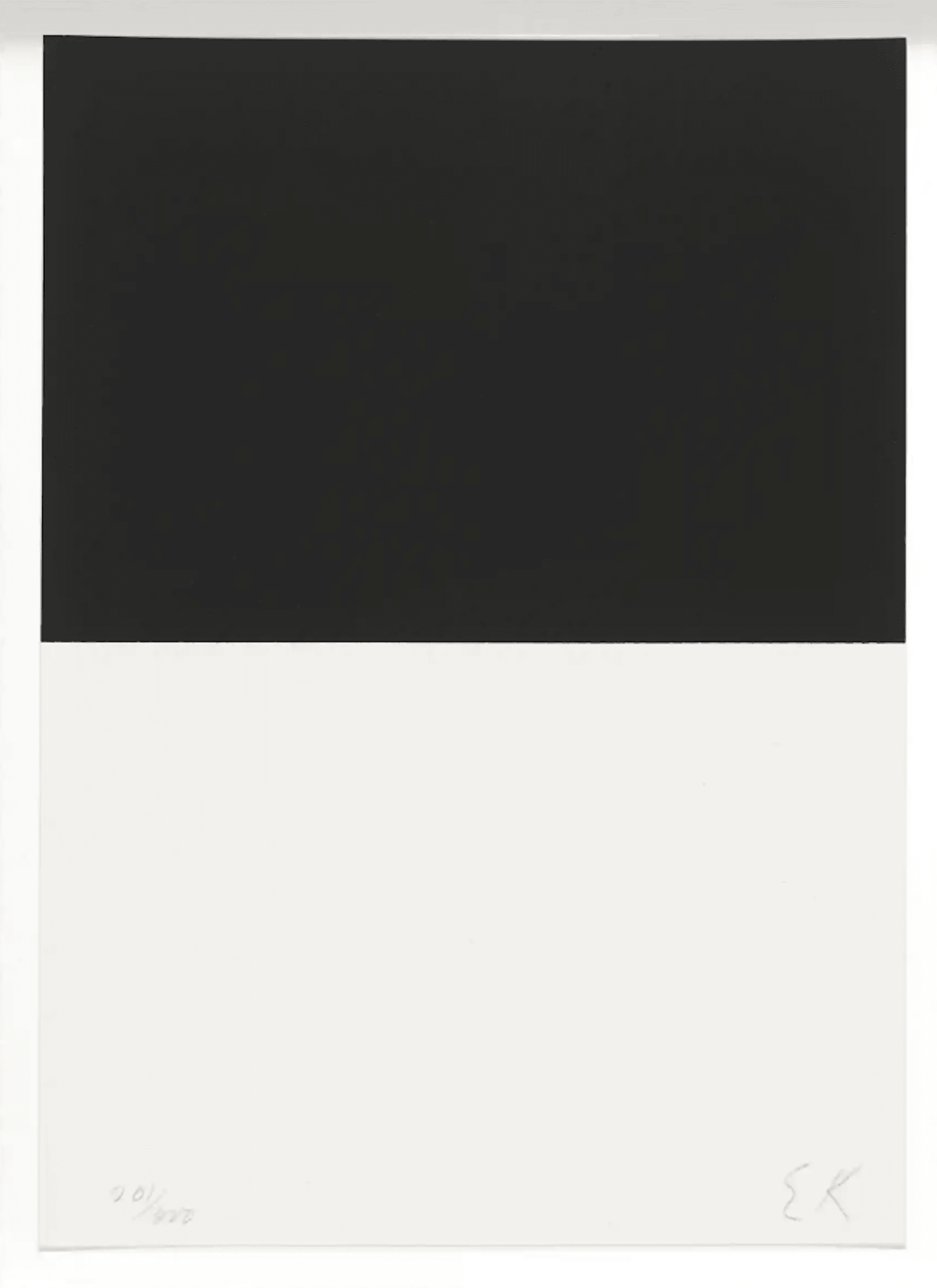Jasper Johns Corpse & Mirror (ULAE 167), 1976 Original Signed Numbered Intaglio
Jasper Johns Corpse & Mirror (ULAE 167), 1976 Original Signed Numbered Intaglio
Couldn't load pickup availability
Share
paper: 25 3/4 by 19 3/4 inches
image: 10 1/2 x 14 inches
frame: 26 1/2 x 20 6/8 inches
edition: 50 with 10 AP's & 2 PP's
signed & dated in pencil "J Johns '76" lower right
numbered in pencil lower left
printed by Atelier Crommelynck
published by Petersburg Press, 1976
© 2025 Jasper Johns / Licensed by VAGA at Artists Rights Society (ARS), NY
Literature
Richard Field, Jasper Johns Prints 1970-1977, Wesleyan University, Middletown, 1978, Catalogue Reference 209, p. 105, another impression reproduced in black and white.
Michel Butor, Kathleen Slavin, Jasper Johns Gravures Dessins 1960-1991, Foundation Vincent Van Gogh, 1992, no. 58, pg. 106, another impression reproduced in full-page color.
Richard Field, The Prints of Jasper Johns 1960-1993: A Catalogue Raisonne, ULAE, New York, 1994, Catalogue Reference ULAE 167, n.p., another impression reproduced in full-page black and white.
Exhibited
The Museum of Modern Art, New York, Recent Acquisitions: American Prints, November 16,1978–February 20, 1979, another impression exhibited.
The Museum of Modern Art, New York, Jasper Johns: A Print Retrospective, May 19, 1986–August 19, 1986, another impression exhibited.
Milwaukee Art Museum, Milwaukee, Jasper Johns, Prints and Multiples, May 15, 1992-August 23, 1992, this impression exhibited.
Ackland Art Museum, University of North Carolina at Chapel Hill, Jasper Johns, Prints and Multiples, September 19, 1992-November 15, 1992, this impression exhibited.
University Art Gallery, State University of New York at Albany, Jasper Johns, Prints and Multiples, March 2, 1993-April, 23 1993, this impression exhibited,
The University of Lethbridge Art Gallery, Lethbridge, Alberta, December 13, 1992-January 31, 1993, this impression exhibited.
The University of Wisconsin, Milwaukee, Modern Bias / Contemporary Viewpoints, February 22-February 22, 1996-March, 31, 1996, this impression exhibited.
Selected Museum Collections
Walker Art Center, Minneapolis
National Gallery of Art, Australia
National Gallery of Art, Washington D.C.
About Joseph K. Levene Fine Art, Ltd.
Before establishing Joseph K. Levene Fine Art, Ltd. in 1991, Joseph K. Levene was President/COO, Petersburg Press, Inc., International publisher of limited editions by David Hockney, James Rosenquist, Howard Hodgkin, Roy Lichtenstein, Jim Dine, Frank Stella and Jasper Johns, including these iconic gems: 0-9 (ULAE 155), 1975, 0-9, Set of 10 Numbers (ULAE 156-165), 1975, Corpse and Mirror (ULAE 167), 1976, Target With Four Faces (ULAE 203), 1979, Target with Plaster Casts (ULAE 208), 1979-80 and many more.
A globally recognized authority on Jasper Johns, Joseph K. Levene Fine Art, Ltd. only buys and sells original Jasper Johns prints without condition issues, meaning we will NOT buy or sell any Jasper Johns print that is faded, torn, trimmed, repaired, cleaned, foxed, discolored and/or over-matted. Unlike auction firms and many art dealers, Joseph K. Levene Fine Art, Ltd. will NEVER buy or sell any Jasper Johns Print that has condition problems even if bargain priced.
View Jasper Johns Prints at Joseph K. Levene Fine Art, Ltd.






View Available Works by Artist
-

Andy Warhol
Shop guaranteed authentic blue-chip Andy Warhol Pop Art including original and unique 50's...
-

Jasper Johns Prints
Jasper Johns ranks among the world's greatest printmakers, often compared to Pablo...
-

Jeff Koons
Shop guaranteed authentic museum quality Jeff Koons prints & multiples at Joseph...
-

Cindy Sherman
Shop guaranteed authentic Cindy Sherman signed, dated and numbered museum quality limited editions...
-

Tony Rosenthal
Shop guaranteed authentic Tony Rosenthal unique maquette sculptures from many of the artist’s...
-

Richard Pettibone
Shop guaranteed authentic unique Richard Pettibone Pop Art Appropriations at Joseph K. Levene...
-

Ellsworth Kelly
Shop guaranteed authentic Ellsworth Kelly limited edition prints and ephemera at Joseph...
-

Damien Hirst
Shop guaranteed authentic blue-chip Damien Hirst signed and numbered limited edition prints and...
-

Tom Wesselmann
Shop guaranteed authentic Tom Wesselmann signed and numbered museum quality Pop Art...
-

Art Books & Catalogues
Shop guaranteed authentic art books & catalogues at Joseph K. Levene Fine...
-

Prints & Multiples
Shop guaranteed authentic blue-chip original prints & multiples at Joseph K. Levene...



















